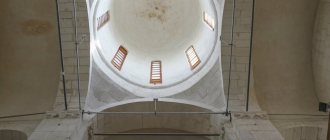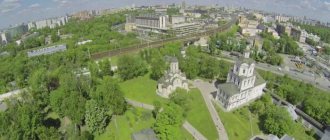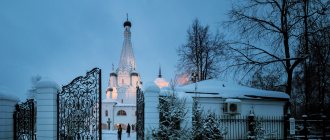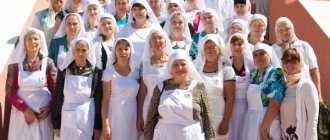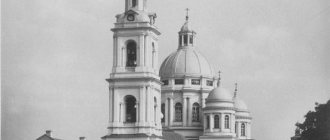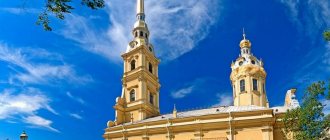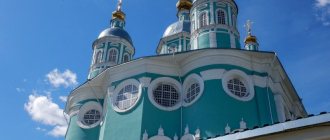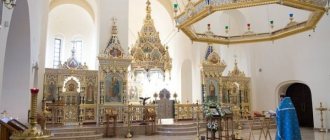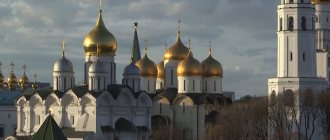Mir
Russia Moscow Assumption Cathedral of the Moscow Kremlin Map loading in progress...
{"format":"leaflet","minzoom":false,"maxzoom":false,"limit":50,"offset":0,"link":"all","sort":[""], "order":[],"headers":"show","mainlabel":"","intro":"","outro":"","searchlabel":"\u2026 \u0441\u043b\u0435\ u0434\u0443\u044e\u0449\u0438\u0435 \u0440\u0435\u0437\u0443\u043b\u044c\u0442\u0430\u0442\u044b","default":"","import-annotation":false,"width ":"auto","height":"350px","centre":{"text":"","title":"""link":"""lat":55.7506819999999976289473124779760837554931640625,"lon": 37.6173479999999978581399773247539997100830078125,"icon":""},"title":"","label":"","icon":"","lines":[],"polygons":[],"circles":[ ],"rectangles":[],"copycoords":false,"static":false,"zoom":8,"defzoom":14,"layers":["OpenStreetMap"],"image layers":[] ,"overlays":[],"resizable":false,"fullscreen":true,"scrollwheelzoom":true,"cluster":false,"clustermaxzoom":9,"clusterzoomonclick":true,"clustermaxradius":80, "clusterspiderfy":true,"geojson":"","clicktarget":"","showtitle":true,"hidenamespace":false,"template":"","userparam":"","activeicon": "","pagelabel":false,"ajaxcoordproperty":"","ajaxquery":"","locations":[{"text":"\u003Cb\u003E\u003Ca href=\"/palomnik/%D0% 91%D0%BB%D0%B0%D0%B3%D0%BE%D0%B2%D0%B5%D1%89%D0%B5%D0%BD%D1%81%D0%BA%D0%B8% D0%B9_c%D0%BE%D0%B1%D0%BE%D1%80_%D0%9C%D0%BE%D1%81%D0%BA%D0%BE%D0%B2%D1%81%D0% BA%D0%BE%D0%B3%D0%BE_%D0%9A%D1%80%D0%B5%D0%BC%D0%BB%D1%8F\» title=\»\u0411\u043b\u0430\ u0433\u043e\u0432\u0435\u0449\u0435\u043d\u0441\u043a\u0438\u0439 c\u043e\u0431\u043e\u0440 \u041c\u043e\u0441\u043a\u043e\u0 432\u0441\u043a\u043e\u0433 \u043e\u041a\u0440\u0435\u043c\u043b\u044f\»\u003E\u0411\u043b\u0430\u0433\u043e\u0432\u0435\u0449\u0435\u043d\u0441\u043a \u0438\u0439 c\u043e\ u0431\u043e\u0440 \u041c\u043e\u0441\u043a\u043e\u0432\u0441\u043a\u043e\u0433\u043e \u041a\u0440\u0435\u043c\u043b\u044f\u0 03C/a\u003E\u003C/b\ u003E\u003Chr /\u003E\u003Ca href=\»/palomnik/%D0%A1%D0%B2%D0%BE%D0%B9%D1%81%D1%82%D0%B2%D0%BE:%D0 %90%D0%BD%D0%BD%D0%BE%D1%82%D0%B0%D1%86%D0%B8%D1%8F\" title=\"\u0421\u0432\u043e\u0439\u0441 \u0442\u0432\u043e:\u0410\u043d\u043d\u043e\u0442\u0430\u0446\u0438\u044f\»\u003E\u0410\u043d\u043d\u043e\u0442\u0430\u0446 \u0438\u044f\u003C/ a\u003E: \u041e\u0434\u0438\u043d \u0438\u0437 \u0434\u0440\u0435\u0432\u043d\u0435\u0439\u0448\u0438\u0445 \u0432 \u041c\u0 43e\u0441\u043a\u0432\u0435 XIV \u0435\u043a\u0430 \u043a\u0430 \u043a \u0434\u043e\u043c\u043e\u0432\u044b\u0439 \u0445\u0440\u0430\u043c \u0432\u0435\u043b\u0438\u043a\u043e\u043a\u043d \u044f\u0436\u0435\u0441\u043a \u043e\u0439, \u0430 \u043f\u043e\u0442\u043e\u043c \u0438 \u0446\u0430\u0440\u0441\u043a\u043e\u0439 \u0441\u0435\u043c\u0 44c\u0438\u043f\u0440\u0438\ u043a\u0440\u0435\u043c\u043b\u0435\u0432\u0441\u043a\u043e\u043c \u0432\u0435\u043b\u0438\u043a\u043e\u043a\u043d\u044f\u04 36\u0435\u0441\u043a\u043e\ u043c \u0434\u0432\u043e\u0440\u0446\u0435.","title":"\u0411\u043b\u0430\u0433\u043e\u0432\u0435\u0449\u0435\u043d\u0441\u043a\u0 438\u0439 c \u043e\u0431\u043e\u0440 \u041c\u043e\u0441\u043a\u043e\u0432\u0441\u043a\u043e\u0433\u043e \u041a\u0440\u0435\u043c\u043b\ u044f","link":"" ,"lat":55.7506819999999976289473124779760837554931640625,"lon":37.61734799999999978581399773247539997100830078125,"icon":""}],"imageLa yers":[]}
55.750682; 37.617348
Russia, Moscow, Cathedral Square
Moscow
Russia
Telephone:
+7 495 695-37-76
Patriarchal Assumption Cathedral of the Moscow Kremlin
- one of the greatest shrines in all of Russia. For several centuries, this temple was the spiritual and political center of the country: here great princes were installed, crowned kings, emperors were crowned, state acts were announced, bishops, metropolitans and patriarchs were elevated to the rank of rank.
History[edit]
The history of the temple begins in 1326, when Grand Duke Ivan Kalita and Saint Peter laid the first stone cathedral in Moscow on this site, dedicated to the Dormition of the Blessed Virgin Mary. The impetus for construction was Moscow's acquisition of the status of the capital city. From now on, it was Moscow, and not the Vladimir Assumption Cathedral, that was called upon to become the main temple of Holy Rus'.
A key role in the promotion of Moscow and the construction of the cathedral was played by St. Peter, the first Metropolitan of Moscow; Here he was buried (still in the unfinished temple). Ivan Kalita dedicated the Church of the Adoration of the Chains of St. to Metropolitan Peter. Apostle Peter, which became the chapel of the Assumption Cathedral. Associated with the name of the saint is a small icon called “Our Lady of Petrovskaya”. According to legend, the icon was painted by St. himself. Peter when he was a young monk in Volyn. The icon was presented by him to Metropolitan Maxim; later it was kept in the Assumption Cathedral as one of the main Moscow shrines. The list that has come down to us was written several decades after the death of the saint.
Assumption Cathedral in the 19th century. Painting by Henry Charles Brewer
At the end of the 15th century. Grand Duke Ivan III, who united all Russian principalities under the rule of Moscow, began the creation of his new residence with the reconstruction of the Assumption Cathedral. The temple was dismantled in 1472 to its very foundations, and the relics of St. Petra. Pskov masters Krivtsov and Myshkin erected a new cathedral, but it unexpectedly collapsed. Then Ivan III invited the architect Aristotle Fioravanti from Italy, under whose leadership the building was built (1475-1479), which still adorns the Moscow Kremlin. Fioravanti was instructed to take the Vladimir Assumption Cathedral as a model - thereby emphasizing the continuity of Moscow in relation to one of the ancient centers of Holy Rus'.
On August 20, 1479, Metropolitan Gerontius consecrated the temple. The relics of the saint, which were located in the Church of St. John the Evangelist during construction, were transferred to the cathedral.
The Assumption Cathedral is a majestic and monumental, powerfully proportioned, three-nave, five-domed church. The spacious interior with 6 thin high pillars contrasts with the somewhat harsh appearance of the facades. They do not restrict space, but create the impression of a huge palace hall. The Assumption Cathedral, which was the main temple of the Moscow state, until the end of the 17th century served as a model for the construction of many cathedrals in the cities and monasteries of pre-Petrine Rus'.
The temple is made of small blocks of white stone. It is particularly monolithic: all divisions are equal in size, the altar apses are flattened and hidden by massive blades, the large domes are close together. The smoothness of the walls is only emphasized by narrow slit windows and a small arched frieze. Chronicles noted that the building looks “like a single stone.” Contemporaries were amazed by the majesty and height, and lightness and space” of the cathedral.
The best masters were hired to paint the first altar church. The oldest frescoes of the Moscow Kremlin are preserved on the altar barrier - images of ascetic monks, painted in 1481 by the artel of the great icon painter Dionysius. The modern appearance of the cathedral is determined by the paintings of 1642-1643. (a group of 150 artists led by the royal isographers Ivan and Boris Paisein and Sidor Pospeev worked on them) and the grandiose iconostasis of 1653, created on the initiative of Patriarch Nikon.
The theme of the painting was determined by the dedication of the temple to the feast of the Dormition of the Blessed Virgin Mary. The painting on the second tier from the top on the southern and northern walls tells the story of the miraculous birth of the Virgin Mary and Her childhood. The next row is occupied by illustrations of the Akathist - a hymn in honor of the Mother of God. An interesting feature of the painting is the image of the Ecumenical Councils in the lower tiers of the walls. On the western wall of the temple there is traditionally a composition of the Last Judgment.
The architecture and murals of the temple create an image of space, where the vaults symbolize the sky carried by the pillars of the cathedral. As a rule, images of martyrs are placed on the pillars, who support the Church with their lives and martyrdom, just as the pillars support the arch.
Collection of icons of the XI-XVII centuries. in the Assumption Cathedral is one of the richest in the world. Most of them were written in Moscow for the cathedrals of the 14th and 15th centuries, others were brought to Moscow from ancient cities during the period of gathering Russian lands. Among the most valuable icons of the cathedral are the double-sided “Our Lady Hodegetria” and “Saint George”, “The Ardent Eye of the Savior”, “Trinity”, two copies of the Vladimir Icon of the Mother of God, the temple image of the “Assumption”, “Present Queen”, “Apostles Peter and Paul ", "Metropolitan Peter in the Life" and many others.
In front of the iconostasis are the prayer places of the king, queen and patriarch. Of particular interest is the so-called “Monomakh Throne” - a place of prayer created in 1551 for Tsar Ivan the Terrible. Its performers were probably Novgorod carvers. Here are presented various motifs and techniques of carving that were once widespread in Rus'. At the base there are four round sculptures - images of fantastic predatory animals. They carry a square structure with a complex shape of columns, balusters, valances, topped with an intricate tent with numerous kokoshniks, rosettes and vases. Twelve bas-reliefs on the walls illustrate “The Tale of the Princes of Vladimir,” which tells about the bringing of royal regalia to Rus' from Byzantium - Monomakh’s cap, barma (ceremonial mantle) and other items.
Since 1326, when St. Peter, and until 1700 the cathedral served as the tomb of the Primates of the Russian Church - metropolitans and patriarchs. There are a total of 19 tombs in the cathedral, located along the walls of the cathedral. The relics of the Moscow wonderworkers Peter, Jonah, Philip and Hermogenes rest in wooden crayfish decorated with metal plates - reliquaries.
During the Patriotic War of 1812, the cathedral was plundered by Napoleonic troops. From some of the silver captured from the French by the Russian Cossacks, a magnificent chandelier was forged, which now hangs in the center of the cathedral.
The oldest monument of applied art in the cathedral is its southern doors (brought to Moscow from the Suzdal Cathedral, dating back to the beginning of the 15th century); 20 images on biblical themes are written on them in gold over black lacquer.
After the October Revolution, the Assumption Cathedral was turned into a museum. When creating its exhibition, the staff tried to preserve its interior as much as possible. Thanks to constant restoration work, almost all icons and paintings were revealed from later records.
Divine services in the cathedral were resumed in 1990.
Shrines of the Assumption Cathedral
The Assumption Cathedral houses the great shrines of Russia:
- the robe of the Lord is a piece of the clothing of Jesus Christ;
- the original Nail of the Lord, with which the Savior was nailed on the cross;
- a piece of stone from Golgotha, stained with the blood of the Lord;
- stone from the tomb of the Mother of God;
- right hand of the Apostle Andrew the First-Called;
- miraculous icon of the Mother of God “Vladimir”, list of 1514;
- the holy relics of St. Peter, who predicted liberation from the Horde;
- The miraculous icon of the Mother of God “Petrovskaya”.
The Assumption Cathedral is the Patriarchal Cathedral , but the temple is always open to tourists. Since 1991, the Assumption Cathedral has been part of the State Historical and Cultural Museum-Reserve of the Moscow Kremlin. With the blessing of the Patriarch, divine services are held on certain holidays. The church is used for especially solemn ceremonies: both the architecture and decoration correspond to the holidays.
Description[edit]
Architecture[edit]
The architect Aristotle Fioravanti quite accurately repeated the model - the Assumption Cathedral in Vladimir, an ancient temple of the 12th century, but created a structure that was fundamentally new in its architecture. The cathedral is made of small blocks of white stone. It is particularly monolithic: all divisions are equal in size, the altar apses are flattened and hidden by massive blades, the large domes are close together. The smoothness of the walls is only emphasized by narrow slit windows and a small arched frieze. Chronicles noted that the building looks “like a single stone.”
The originality of the architecture of the Assumption Cathedral is more strongly felt in its interior: the use of new technical means made it possible to enlarge all divisions of the temple; the round pillars do not crowd out the space, creating the impression of a huge palace hall. The cathedral amazed contemporaries with its “majesty and height, and lightness and space.”
Interior[edit]
The cathedral's murals, numerous icons and various utensils are works of art of world significance.
The modern appearance of the cathedral is determined by monuments from the mid-17th century. – paintings of 1642-1643. and the grandiose iconostasis of 1653.
In front of the iconostasis are the prayer places of the king, queen and patriarch. The most interesting is the royal prayer place. In the southwestern corner there is an openwork bronze tent for storing sacred relics.
In the XIV – XVII centuries. The Assumption Cathedral was the tomb of the heads of the Russian church - metropolitans and patriarchs. All the burials of the saints, except for the revered saints, whose relics were placed in reliquaries, are located under the “spud”, under the floor of the cathedral; tombstones were built over them in the 17th century, and the patriarchal tombstones near the southern wall were provided with carved white stone inscriptions - epitaphs. In 1913, all tombs were covered with silver-plated brass covers.
After the revolution of 1917, the Assumption Cathedral was turned into a museum. When creating its exhibition, the staff tried to preserve its interior as much as possible. Thanks to constant restoration work, almost all icons and paintings were revealed from later records. Since 1990, services have resumed in the cathedral.
Tomb[edit]
On December 21, 1326, Metropolitan Peter was buried in the still unfinished building of the Assumption Cathedral. From that time on, the cathedral became a temple-burial vault for Russian saints - metropolitans and patriarchs. In 1329, Peter's successor on the metropolitan throne, the Greek Theognostus, built the Peter and Paul Chapel in memory of his holy predecessor, where he himself was buried in 1353.
All the burials of the saints, except for the revered saints, whose relics were placed in reliquaries, are located under the “spud”, under the floor of the cathedral; tombstones were built over them in the 17th century, and the patriarchal tombstones near the southern wall were provided with carved white stone inscriptions - epitaphs. In 1913, all tombs were covered with silver-plated brass covers manufactured by I.P. Khlebnikov, with eight-pointed gilded crosses and black inscriptions on the covers.
Architectural features
The Assumption Cathedral is the brainchild of the talented Aristotle Fioravanti. The Italian took as a basis the project of the temple of the same name, located in the city of Vladimir. However, Aristotle's building is visually different from this building. Its main feature is the Renaissance features, which were displayed in the external decoration of the cathedral without violating the classical understanding of architectural space.
The capital's Assumption Church includes 6 pillars, five asps and five domes. The cathedral is located on a strong, which is mostly hidden by the embankment of the square. To cover the temple, a system of cruciform vaults and numerous arches were used. They are supported by powerful pillars and blades located on the inside. The main material for the construction of the Assumption Cathedral was white stone. Its hewn blocks were laid out with backfilling inside. They are complemented by brick pillars, drums, vaults and an altar partition.
A distinctive original feature of the temple is also the combination of apses (there are five in total). Flat and low, they allow you to hide the altar part behind a buttress located outside at the end. During the implementation of large-scale construction, Aristotle Fioravanti abandoned the cornice, and he used an arcature belt to separate the facades.
INTERESTING: Jesus Christ.
The Assumption Cathedral stands out from other buildings of the Italian Renaissance primarily by the absence of repetitions of certain architectural techniques and decor. The brainchild of Fiorovanti turned out to be laconic, strict, and compositionally clear in its style.
Patronal holidays[edit]
Dormition of the Blessed Virgin Mary
- August 28
Demetrius of Thessaloniki, great martyr
— November 8
Praise to the Blessed Virgin Mary
— Saturday of the fifth week of Lent (side-altar)
Peter and Paul, chief apostles
— July 12 (altar)
Architecture
The creation of Aristotle Fioravanti harmoniously combines different architectural styles:
- Romanesque
- Byzantine
- Gothic
- Russian
Small stone blocks were used for construction. Due to this, the building has the appearance of a monolithic structure. The facade is divided into equal parts. Narrow window loopholes stand out on the surface of the walls. Along the entire perimeter of the structure stretches an arcature-columnar belt, consisting of decorative small arches resting on columns. The interior space is spacious and bright. The effect of openness is achieved through the use of round pillars supporting the dome and the creation of additional arches behind the iconostasis. In addition, innovations were tested during the construction of the building:
- Metal fasteners inside walls
- Single-brick cruciform vaults
The top of the church is covered with domes. Their layout is slightly shifted to the east. According to legend, the domes of the temple were first crowned with 8 terminal crosses.
Pilgrim[edit]
The architectural ensemble is open to the public from 10:00 to 17:00.
From May 15 to September 30 from 9:30 to 18:00.
Day off is Thursday.
A single ticket for visiting the architectural ensemble of Cathedral Square gives the right to view the Assumption, Archangel, and Annunciation Cathedrals, the Church of the Deposition of the Robe, the Patriarchal Chambers with the Church of the Twelve Apostles, the exhibition “Treasures and Antiquities of the Moscow Kremlin” in the basement of the Annunciation Cathedral, and the exhibition of Russian wooden sculpture in the covered gallery of the church Placing the Robe, an exhibition dedicated to the Ascension Monastery in the southern annex of the Archangel Cathedral.
Ticket price (without discounts) - 500 rubles.
The ticket price for Russian full-time students and pensioners (upon presentation of the relevant documents) is 250 rubles.
The architectural ensemble and exhibitions are free to visit:
Persons under 16 years of age, regardless of citizenship; members of large families; persons receiving a survivor's pension; disabled people of groups I and II; children with childhood disabilities; children under the care of the state (orphans); WWII participants and equivalent categories; museum staff (RF and CIS); clergy (Russian Federation and CIS); members of the Society of Friends of the Museum; conscripts. Persons under 18 years of age - every second Tuesday of the calendar month.
Tickets can be purchased:
— Online on the museum’s website, except for discounted and free ones;
— at the box office in the Alexander Garden from 9:30 to 16:30.
From May 15 to September 30 from 9:00 to 16:30. Day off is Thursday.
Additional services:
— excursions accompanied by a museum guide.
Amateur photography and video shooting in cathedral museums is prohibited.
Attention! A visit to the Armory Chamber requires a separate ticket.
Place for the wedding of kings
The first Russian monarch to receive his crown within the walls of the cathedral was Ivan IV, nicknamed the Terrible (1547). After the capital was moved from Moscow to St. Petersburg, the temple retained its status. The coronation ceremonies of Russian emperors continued to take place there. The high role of the temple in the state life of the country is evidenced by a specially made royal prayer place (1551). It was called the “Throne of Monomakh”. The walls forming the base of the seat have a painting about the gift of royal regalia by the Byzantine Emperor Constantine to Vladimir Monomakh, Prince of Kyiv.
At the foot of the throne, figures of fantastic animals are skillfully carved. The top, in the form of a tent, is supported by 4 pillars decorated with floral patterns. The wooden dome above the throne is decorated with bas-reliefs of strange birds. The chair was carved from walnut wood and painted by Novgorod craftsmen.
How to get there
You can get to the cathedral by metro, bus or taxi:
| Nearest metro stations | Nearest bus stops | |||
| Name | Distance | Name | Distance | No. of routes |
| Alexander Garden | 910 m | Red Square | 750 m | m5, 158 |
| Big Stone Bridge | 950 m | m3, 255 (until 21.30) | ||
| Lenin's Library | 990 m | Metro station "Lenin Library" | 1.1 km | m2, m7, night n2 |
| Borovitskaya Square | 1.2 km | m27, m2, m3 | ||
| Manezhnaya Square | 1.2 km | m27,101, 144, 158, m5, 904, m10, m3, night: n1, n2, n11, n12 | ||
| Okhotny Ryad | 1 km | |||
A visit to the Kremlin, a walk through its vast territory of 27 hectares and a tour of the Kremlin cathedrals created by the most famous architects of their time will become unforgettable not only for guests of the capital, but also for Muscovites themselves.
But the heart of the Kremlin, after all, was and remains the Assumption Cathedral in Moscow - a place where you can feel so much spirituality, admiration and grandeur, perhaps, like nowhere else in Russia.
Author: Irina Zhuravka
Service Schedule
Regular services have been held in the cathedral since 1992. They are held on the days of remembrance of the saints resting in the cathedral, and on major church holidays (the Dormition of the Virgin Mary, Christmas and Easter). However, you can only get into the service with a special invitation received from the Moscow Patriarchate.
In addition, on the day of Cyril and Methodius, a religious procession is held annually. On normal days, the Assumption Cathedral is open to the public at the same time as other Kremlin attractions.
Who built
The first builders of the main temple of Moscow were Russian masters Krivtsov and Myshkin. However, they failed to complete the matter. Due to tremors, the walls of the church collapsed. It is believed that the cause was too weak a fastening. Tsar Ivan III decided to turn to recognized foreign architects for help. On his instructions, the embassy of Semyon Tolbuzin invited the hereditary Italian architect Ridolfo Fioravanti to Moscow. He was involved in the creation of religious buildings throughout Italy, and also worked in Hungary.
Before starting work on the church, the architect ordered the construction of a brick factory in the Moscow region. Thanks to the new building materials, the walls have become noticeably stronger. After the completion of the Assumption Cathedral, the architect remained in Russia and worked on fortification. According to legend, he was entrusted with the arrangement of a storage facility for the legendary liberium (library) of Ivan the Terrible.
Interior
The first painting of the temple was created by a team of painters, headed by Dionysius. However, during the great fire the frescoes were badly damaged. Artists from all over the country were invited to re-decorate the interior. 150 artists worked on painting the walls. They were led by Sidor Pospeev, Boris and Ivan Paisein. The work was completed in 1642-1644.
Picturesque compositions consist of interconnected subjects:
- Under the dome is the vault of heaven
- Upper tier – paintings based on the Gospel
- Second tier – biography of the Virgin Mary
- Lower tier – 7 Ecumenical Councils
There are 249 compositions in total. The cathedral houses a huge collection of Orthodox icons. Among the glorified ones are the Vladimir Mother of God, Our Lady Hodegetria, the Assumption, the Bright Eye of the Savior, St. George, the Trinity. The total height of the iconostasis is over 16 m. It has 5 tiers.
In front of the iconostasis:
- On the left side is the royal seat
- On the right side is the place of the patriarch
Another decoration of the temple is the chandelier, cast in silver to commemorate the victory over the Napoleonic army. The huge candelabra weighs 328 kg.
Opening hours and visiting rules
The museum receives visitors every day (except Thursday):
- from 10 to 18 hours (15.05-30.09)
- from 10 to 17 hours (1.10-14.05)
During public events on Red Square, the Kremlin museums are closed. The special location of the cathedral on the territory of the Kremlin dictates strict adherence to rules for visitors. They regulate the requirements for tourists:
- Must have a ticket to the museum.
- The Borovitsky and Trinity gates are open to allow people through.
- Photography inside the museum is prohibited.
Frescoes
The most ancient frescoes not only of the Kremlin, but of all of Moscow can be found on the altar barrier of the Assumption Cathedral. Dionysius and his team painted these images in the first years of the existence of the temple built by Fiorovanti. The main characters of the frescoes are ascetic monks who received the status of venerables. What saved the images from fading and destruction was the fact that they were hidden by the iconostasis for a long time, and they were discovered only towards the end of the 19th century.
© Julia Alisova
The frescoes in the central part of the cathedral were created in the mid-17th century. They are divided into cycles: “The Earthly Life of the Mother of God”, “The Earthly Life of Christ”, “Ecumenical Councils”, “Akathist”, “The Last Judgment”. The domes, pillars and vaults are also painted. The five domes of the cathedral serve as 5 canvases for various images of God. The pillars depict 135 martyrs, who are revered as the “pillars of the church.”
